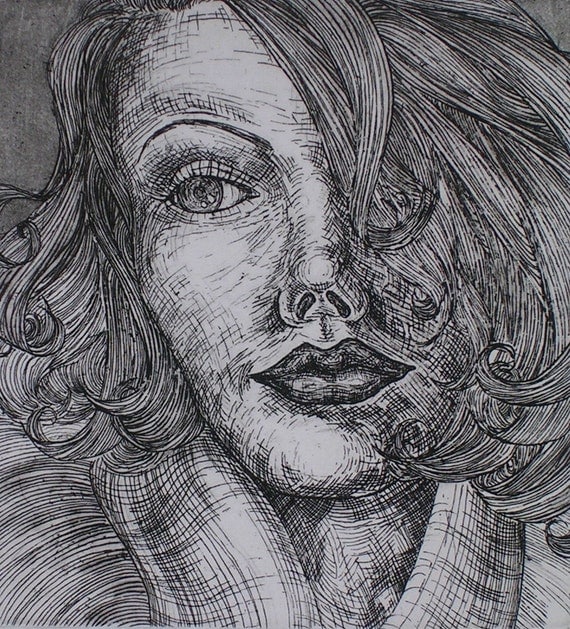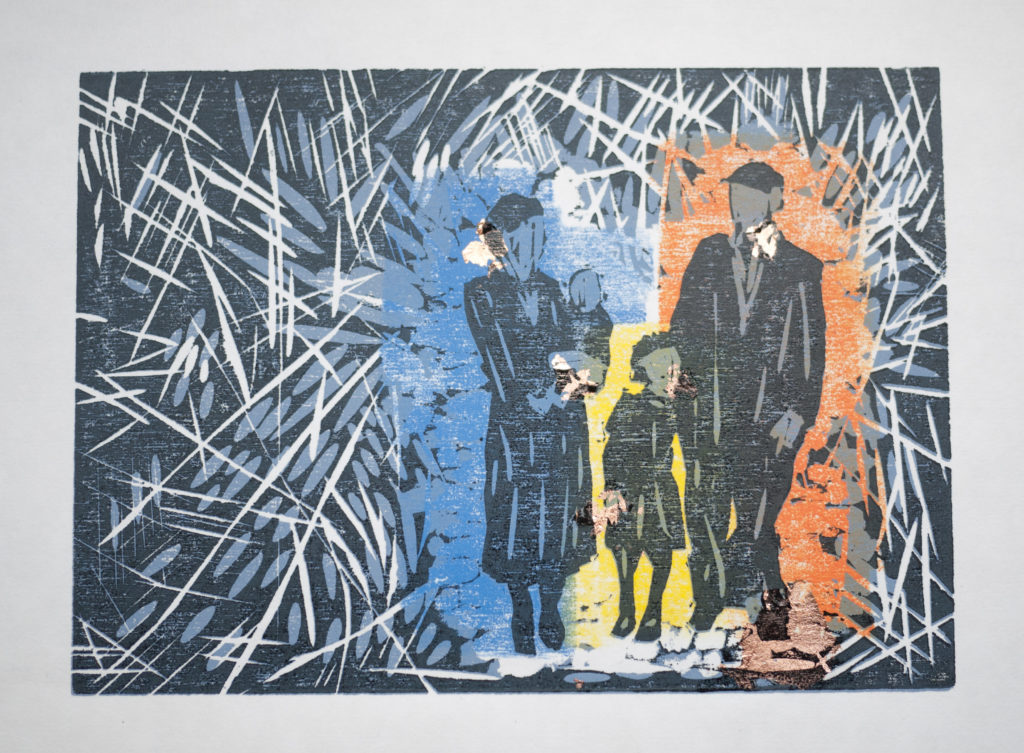


Engraving requires drawing a line while pressing into a plate the correct distance to create the desired shade and line width. Artists learned to create various kinds of shading through the use of dots, called stippling, and groups of parallel lines at various angles to each other, called cross-hatching. Propelled by the genius of artists like Albrecht Dürer (1471-1528), intaglio techniques quickly grew. In an age when the printing press and movable type were first being invented, this was the equivalent of today's mass-produced posters. Artists made engravings of religious scenes, while craftsmen used the new technique to make copies of famous paintings or decks of playing cards. From the beginning, intaglio printing was used for both the sacred and the profane. For example 14/100 of each design will be printed in sepia ink on Magnani paper 21/100 will be indigo ink and loosely wiped back. Each image will be photographed and emailed for approval before it is lovingly wrapped and delivered to its new home.Engraving first became popular in Europe during the fifteenth century, when paper became available far more widely than it had been previously. The styles are consistent across the number in the edition. Each print in the edition has a subtle but unique character, whether it be a change in colour, from indigo, violet, Sepia or black inks, the degree in which it is wiped back from the surface of the plate, or whether it has been stitched into or hand touched in the later prints in the editions. After it is pressed through the rollers, the paper is embossed where the plate is pressed through the rollers, and the delicate lines of the drawing are revealed in a variety of colours and styles in the print. Each plate is inked up separately and rubbed back to reveal different depths and tones of colour with the underlying design always consistent underneath. PRODUCT SPECS: Each design is drawn on to 250mm copper plate, and after being etched in an acid bath, is pressed on to Magnani Paper using Chabonnel ink.
Intaglio prints series#
They are a series of copper plate etchings on 250mm copper plate, etched and printed by hand on a roller press on Magnani paper. ‘The Wandering Series’ are the first etchings made especially for the red art shed label. This is Red Art Shed’s first press of prints ever made under the red art shed label. ‘My Bed is a Small Boat Lost at Sea’, Plate 1, is one of 12 art works in a collection of limited edition Intaglio prints from ‘The Wandering Series’. ‘My Bed is a Small Boat Lost at Sea…’, Limited Edition Hand Coloured Intaglio Print, 2013 “Moon-Bathing My Bed is a Small Boat Lost at Sea ~ “Edition Intaglio Print in prussian, 2013 ‘Coming Home’, Limited Edition Intaglio Print in sepia, Indigo and rose, 2013 “Moon-Bathing and Shadow” Limited Edition Intaglio Print in Sepia, 2013 ‘My Bed is a Small Boat Lost at Sea…’, Limited Edition Intaglio Print in Sepia, 2013 “Holding Back The Night With Its Increasing Brilliance, The Summer Moon ~ Bashu”,, Edition Intaglio Print in sepia, 2013 ‘I am in a House in a Japanese Print, The Sun is Everywhere, Everything is Transparent…’, Limited Edition Intaglio Print in sepia, 2013 ‘Westward Bound and the East I Found…’, Embroidered Limited Edition Intaglio Print in prussian, 2013 ‘…And Makes One Little Room, An Everywhere…’, Limited Edition Intaglio Print in sepia and rose, 2013 ‘Westward Bound and the East I Found’ Limited Edition Intaglio Print, Sepia Etching 2013 ‘My Bed is a Small Boat Lost at Sea…’, Limited Edition Intaglio Print, Aquatint in Sepia 2013


 0 kommentar(er)
0 kommentar(er)
